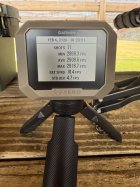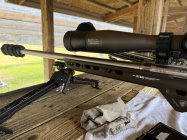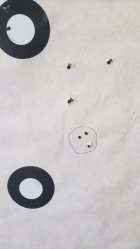I started playing with neck tension recently for my 6BRA. I started with a Wilson 266 bushing and it gives me ~0.003" interference from loaded, and the sized neck comes in at 0.2660-0.2665" with calipers, loaded round is 0.2690-0.2695" (yes, I know I should be using a micrometer and Christmas is coming, so that will solve that issue...). Then I ordered a Wilson 267 and found a good deal on a Redding TiN 265. The 267 gives me 0.2670-0.2675", but the TiN 265 is giving me 0.2630-2635". I had heard that the Redding TiN bushing sized a bit large, but I found the exact opposite. I ran gauge pins in all of them and they're right where they should be, within 0.0002". So I ordered a Wilson 265 bushing and got the exact same result; 0.2630-0.2635". And it feels like that much more interference when seating a bullet. This seems like the opposite of spring back. This is with both Alpha and Lapua brass, flame annealed. What am I seeing/missing here?













